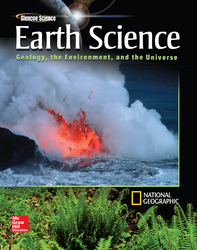1 A) reduced amounts of animal waste B) excessive sunlight C) minimal algae growth D) excessive nutrients 2 A) breathing of animals B) photosynthesis by plants C) decay of plants D) decay of animals 3 <a onClick="window.open('/olcweb/cgi/pluginpop.cgi?it=gif::::/sites/dl/free/0078746361/561661/ah.GIF','popWin', 'width=NaN,height=NaN,resizable,scrollbars');" href="#"><img valign="absmiddle" height="16" width="16" border="0" src="/olcweb/styles/shared/linkicons/image.gif"> (15.0K)</a> A) Higher phosphate and nitrogen levels suggest it was damaged by fertilizers. B) The falling population of largemouth bass indicate that too much fishing has occurred on this lake. C) Lower oxygen levels indicate that too many fish were living in the lake. D) The dropping pH levels indicate that acid rain has been plaguing the region. 4 A) They can filter pollutants from groundwater B) They can provide habitat for wildlife C) They can be filled in to provide land for housing development. D) They grow plants that ultimately become coal 5 <a onClick="window.open('/olcweb/cgi/pluginpop.cgi?it=gif::::/sites/dl/free/0078746361/561661/ah.GIF','popWin', 'width=NaN,height=NaN,resizable,scrollbars');" href="#"><img valign="absmiddle" height="16" width="16" border="0" src="/olcweb/styles/shared/linkicons/image.gif"> (15.0K)</a> A) Increase fishing of other species in the lake. B) Encourage local farmers to decrease use of fertilizers. C) Oxygenate the lake. D) Cover the lake surface with tarps.





